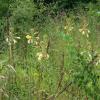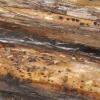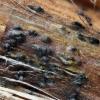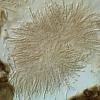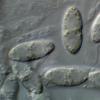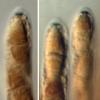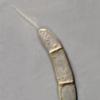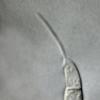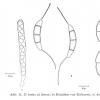
28-08-2025 17:24
Thomas FlammerI know, that this is not the real topic of this fo

29-08-2025 05:16
 Francois Guay
Francois Guay
I think I may have found the teleomorph of Dendros

27-08-2025 12:02
Pavol PaloHello dear friendsI would like to ask for sharing

25-08-2025 17:37
 François Freléchoux
François Freléchoux
Bonjour,Nous avons trouvé samedi dernier à l'ét

20-08-2025 19:04
Ethan CrensonHello, This asco was found on the same wood as my

22-08-2025 08:41
Masanori KutsunaHello.Can anyone help me to get this article?Liu H

So I am confident that this is Discostroma tostum, a common species on stems of Chamerion and Epilobium, but not associated with Oenothera. An online search has only come up with a single possible incidence: https://www.discoverlife.org/mp/20l?id=BPI611108 (unfortunately the hyperlink under "More details" doesn't seem to work). The jump from Epilobium to Oenothera does not seem too unusual, as molecular work has shown the two genera to be monophyletic.
I would be interested to know if anyone else has come across this fungus on any hosts other than Epilobium, and would encourage people to have a look at Oenothera in their areas. One thing that has arisen from this exercise is that the illustrations in Dennis (1981) and Ellis & Ellis (1985) are rather poor - I suspect this is due to "fungarium mycology" rather than vital mycology and this has contributed to the disparity in spore measurements. Although I have used the name Discostroma tostum, there is a strong case, under the "one fungus, one name" criterion, for its being called Seimatosporium tostum (Berk. & Broome) Rossman & W.C. Allen - see Rossman et al. in IMA Fungus, 7, (2016) p.5.
Cordialement
Chris

the link to BPI works now, it lists D. Hruby's 1928 collection from Rottigeltal near Krumau in Moravia (with current names: the valley of Rokytna river near Moravsky Krumlov). "D. Hruby" might be an error in first name, as Johann Hruby published in 1928 a collection od Paradidymella tosta on Oenothera biennis from near a large viaduct near Eibenschitz (= Ivancice). Rokytna river actually connects these two towns, so it might be the same locality. "Didymella torta" (typographic error?) is also listed in Hruby (1928): Die Pilze Mährens und Schlesiens. Hedwigia 68, but without locality or host.
A Paradidymella tosta specimen was also distributed in Reliquiae petrakianae no. 77, C. Scheuer wrote that BPI got the first five complete fascicles (and fasc. 6-14 partially). Perhaps that's the specimen on BPI website? edit: but the specimen held in CUP has Epilobium as host (https://mycoportal.org/cup/mycology/RelPetrak0/Rel.Petrak.0077.jpg).
Best regards,
Viktorie
Johann Hruby (1928): Die pflanzengeographischen Verhältnisse Westmährens. – Verhandlungen des naturforschenden Vereines in Brünn – 62: 30 - 77. https://www.zobodat.at/pdf/Verh-naturf-Ver-Bruenn_62_0030-0077.pdf
Christian Scheuer (1992): Reliquiae Petrakianae - Alphabetisches Gesamtverzeichnis und Corrigenda (Cumulative Index and Corrigenda).


